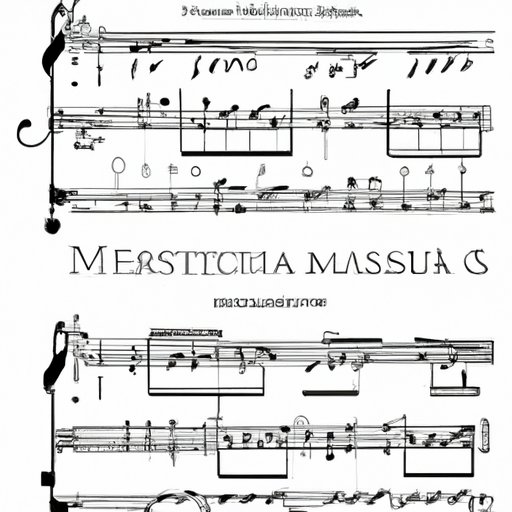Introduction
The “Wedding March” is one of the most widely recognized pieces of classical music in the world. It has become synonymous with weddings, often being played during the entrance or exit of the bride and groom. Its origins are steeped in history, but who wrote this timeless piece? This article will explore the life and music of Felix Mendelssohn, the composer of the beloved “Wedding March”.

Biographical Look at the Composer of the Wedding March
Felix Mendelssohn was born on February 3, 1809 in Hamburg, Germany. He came from a wealthy Jewish family and was exposed to music at an early age. His father, Abraham, was a banker and an amateur musician, and his mother, Lea, was a talented singer and pianist. Felix was primarily self-taught, but he did receive some formal training from composer Carl Friedrich Zelter. He quickly developed into a prodigy and composed his first pieces by the age of twelve.
Mendelssohn went on to become one of the most influential composers of the 19th century. He wrote several symphonies, concertos, operas, and chamber works, and became renowned for his ability to incorporate elements of both classical and romantic styles. He was also a conductor and performed many of his own compositions. Mendelssohn passed away on November 4, 1847 at the young age of 38.
A Historical Perspective on the Origin of the Wedding March
The “Wedding March” was composed in 1842 as part of Mendelssohn’s incidental music for A Midsummer Night’s Dream. It is believed that the piece was originally intended to be a processional for the bridal couple in Act III of the play. The music was first performed in 1843 in London and became an instant hit. It quickly spread throughout Europe, becoming a popular choice for wedding ceremonies.
In the 19th century, it was common for couples to select their own music for the ceremony, rather than relying on traditional hymns or religious songs. The “Wedding March” was one of the most popular choices and quickly became established as a “wedding classic”. It continues to be a staple at wedding ceremonies around the world.

The Cultural Significance of the Wedding March
The “Wedding March” has become an iconic symbol of marriage. It is often used in films and other media to signify the beginning of a new relationship or chapter in a character’s life. Its popularity can also be attributed to its uplifting and joyous melody, which captures the spirit of love and celebration.
The song has been covered by countless artists over the years, from classical musicians to rock bands. Its simple yet powerful melody also makes it easy to adapt to different musical styles. As such, it remains a timeless classic that is sure to remain a staple at wedding ceremonies for generations to come.
Exploring the Musical Influences Behind the Wedding March
Mendelssohn drew inspiration from a variety of sources when composing the “Wedding March”. He was heavily influenced by the works of Mozart and Beethoven, both of whom had a profound impact on his style. He also drew influence from the works of Johann Sebastian Bach and George Frideric Handel.
Mendelssohn’s other works provide further insight into the influences behind the “Wedding March”. His choral works such as the “Hymn of Praise” and “Elijah” demonstrate a similar style and emotion. His piano works, such as the “Variations Serieuses”, also feature a similar melodic structure. All of these works point to a common source of inspiration for the “Wedding March”.

Examining the Inspiration Behind the Composition of the Wedding March
The exact source of inspiration for the “Wedding March” remains unknown. However, there are a few possible explanations. One theory suggests that Mendelssohn was inspired by his sister Fanny’s wedding in 1829. Another suggests that he was inspired by the love story of his friend Wilhelm Hensel and his wife Marianne. Whatever the true source of inspiration, it is clear that the “Wedding March” was composed with love in mind.
Mendelssohn’s personal story also sheds light on the origin of the “Wedding March”. He faced discrimination due to his Jewish heritage, and was often denied opportunities that were available to non-Jewish composers. Despite this, he persevered and achieved great success. The “Wedding March” may have been a way for him to express his joy and hope for a better future.
Conclusion
The “Wedding March” has become a timeless classic that is sure to be enjoyed by generations to come. Its uplifting melody and cultural significance make it a fitting choice for any wedding ceremony. Through exploring the life and music of Felix Mendelssohn, we have gained insight into the cultural and personal influences behind the composition of the “Wedding March”.
For more information about the life and music of Felix Mendelssohn, please visit the following websites: https://www.biography.com/musician/felix-mendelssohn, https://www.britannica.com/biography/Felix-Mendelssohn, and http://www.mendelssohn.org/.


